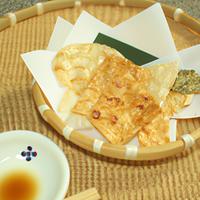
1 serving (30 grams) contains 120 calories, 2.0 grams of protein, 1.5 grams of fat, and 25.0 grams of carbohydrates.

Log this food in SnapCalorie

Nutrition Information
Calories |
600 | ||
|---|---|---|---|
% Daily Value* |
|||
| Total Fat | 7.5 g | 9% | |
| Saturated Fat | 1.5 g | 7% | |
| Polyunsaturated Fat | 0 g | ||
| Cholesterol | 0 mg | 0% | |
| Sodium | 1000.0 mg | 43% | |
| Total Carbohydrates | 125.0 g | 45% | |
| Dietary Fiber | 2.5 g | 8% | |
| Sugars | 5 g | ||
| protein | 10.0 g | 20% | |
| Vitamin D | 0 mcg | 0% | |
| Calcium | 50 mg | 3% | |
| Iron | 1.0 mg | 5% | |
| Potassium | 150 mg | 3% | |
* Percent Daily Values are based on a 2,000 calorie diet. Your daily values may be higher or lower depending on your calorie needs.
Food Attributes
Source of Calories
About Japanese rice crackers
Japanese rice crackers, known as "senbei," are traditional snacks originating from Japan's culinary heritage. Made primarily from glutinous or non-glutinous rice flour, these crackers are crafted through a process of steaming, shaping, and baking or grilling. They come in a variety of flavors—ranging from savory soy sauce to sweet sugar coatings—and textures, including light and crispy or dense and chewy. Senbei are often seasoned with seaweed, sesame seeds, or spices for added flavor. From a nutritional perspective, rice crackers are low in fat and offer a modest source of carbohydrates, making them a quick energy boost. However, their sodium content can be high due to seasoning, and some varieties include added sugars. They are gluten-free, which makes them suitable for those with certain dietary restrictions. While enjoyed as a snack, portion control is key to balancing their health impacts within a diet.



